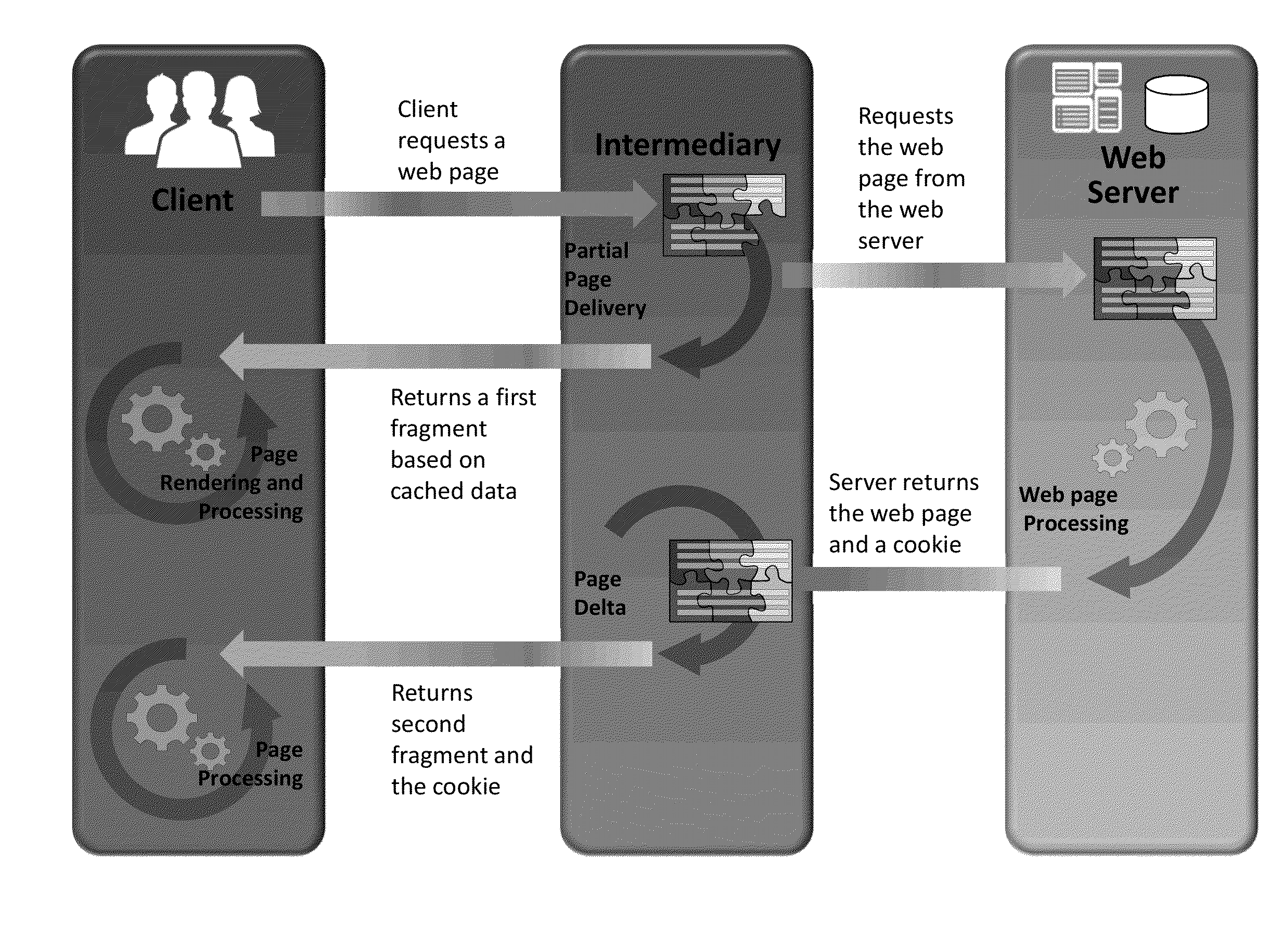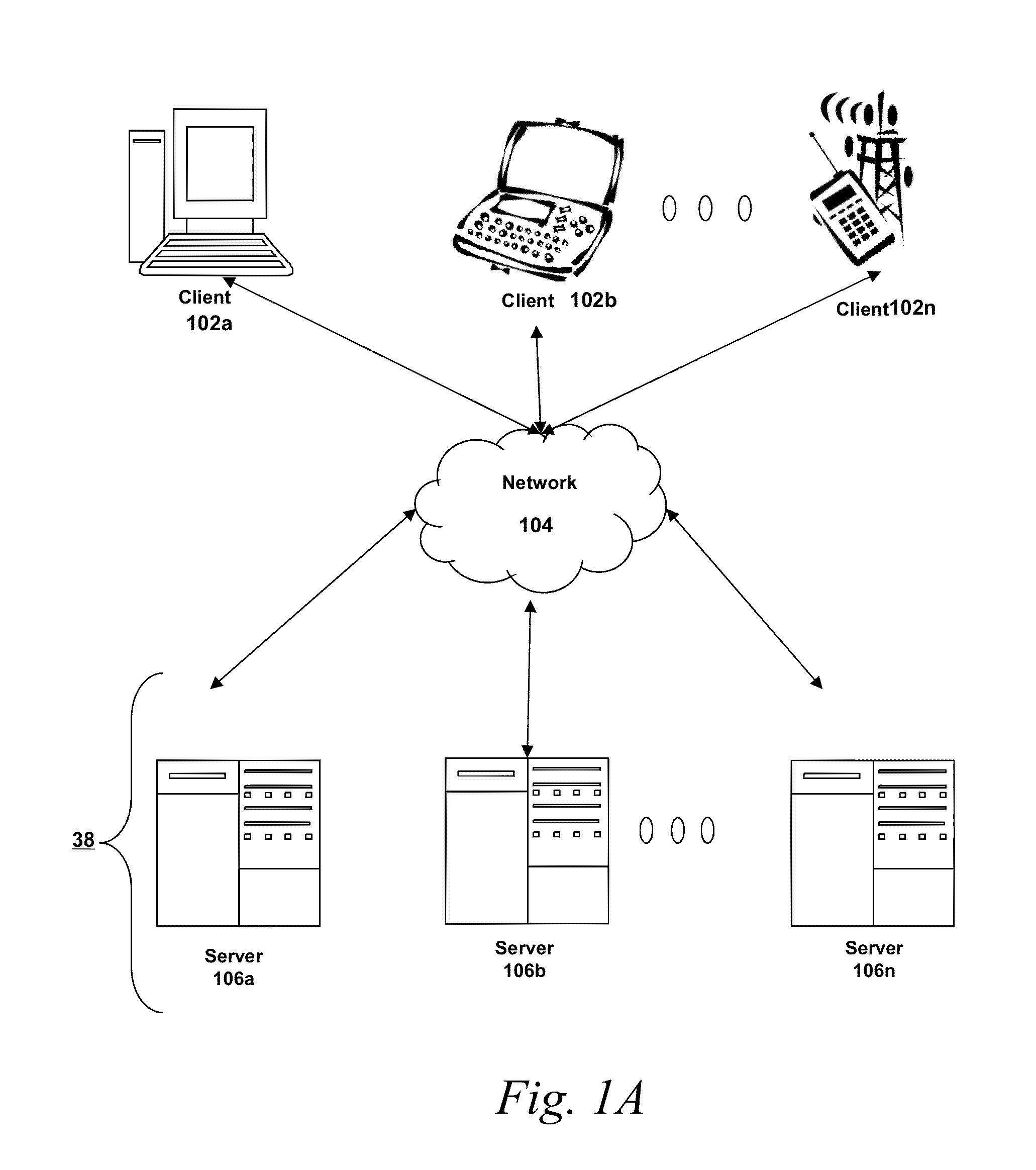Systems and methods for dynamically modifying a requested web page from a server for presentation at a client
a dynamic content and server technology, applied in the field of system and method for dynamic content delivery, can solve the problems of significantly impairing the web experience of users, typical content delivery systems may not efficiently handle dynamic content, etc., and achieve the effect of improving or enhancing system performan
- Summary
- Abstract
- Description
- Claims
- Application Information
AI Technical Summary
Benefits of technology
Problems solved by technology
Method used
Image
Examples
Embodiment Construction
[0023]For purposes of reading the description of the various embodiments below, the following descriptions of the sections of the specification and their respective contents may be helpful:[0024]Section A describes a network environment and computing environment which may be useful for practicing embodiments described herein; and[0025]Section B describes embodiments systems and methods for dynamically modifying a requested web page from a server for presentation at a client.
A. Computing and Network Environment
[0026]Prior to discussing specific embodiments of the present solution, it may be helpful to describe aspects of the operating environment as well as associated system components (e.g., hardware elements) in connection with the methods and systems described herein. Referring to FIG. 1A, an embodiment of a network environment is depicted. In brief overview, the network environment includes one or more clients 101a-101n (also generally referred to as local machine(s) 101, client(...
PUM
 Login to View More
Login to View More Abstract
Description
Claims
Application Information
 Login to View More
Login to View More - R&D
- Intellectual Property
- Life Sciences
- Materials
- Tech Scout
- Unparalleled Data Quality
- Higher Quality Content
- 60% Fewer Hallucinations
Browse by: Latest US Patents, China's latest patents, Technical Efficacy Thesaurus, Application Domain, Technology Topic, Popular Technical Reports.
© 2025 PatSnap. All rights reserved.Legal|Privacy policy|Modern Slavery Act Transparency Statement|Sitemap|About US| Contact US: help@patsnap.com



